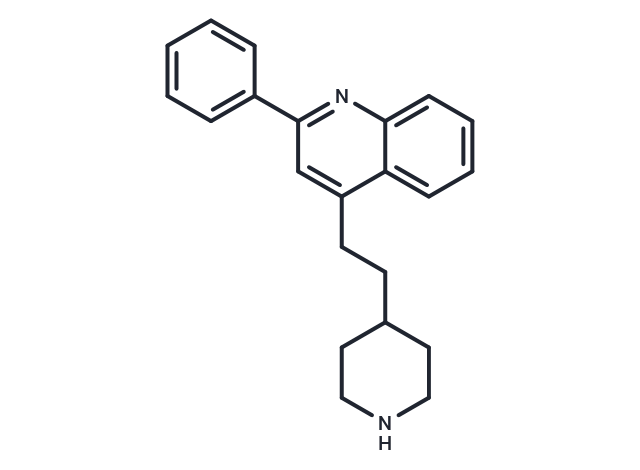Shopping Cart
- Remove All
 Your shopping cart is currently empty
Your shopping cart is currently empty

Pipequaline (PK-8165) is an anticonflict & anticonvulsant quinoline derivative. It is an anxiolytic drug that was never marketed. It possesses a novel chemical structure that is not closely related to other drugs of this type. The drug has a similar pharmacological profile to the benzodiazepine family of drugs, but with mainly anxiolytic properties and very little sedative, amnestic or anticonvulsant effects, and so is classified as a nonbenzodiazepine anxiolytic.


| Description | Pipequaline (PK-8165) is an anticonflict & anticonvulsant quinoline derivative. It is an anxiolytic drug that was never marketed. It possesses a novel chemical structure that is not closely related to other drugs of this type. The drug has a similar pharmacological profile to the benzodiazepine family of drugs, but with mainly anxiolytic properties and very little sedative, amnestic or anticonvulsant effects, and so is classified as a nonbenzodiazepine anxiolytic. |
| In vitro | Pipequaline is extensively bound to plasma proteins: i.e. human serum albumin (HSA), alpha-1-acid glycoprotein (AAG), lipoproteins and blood cells, mainly erythrocytes[1]. |
| In vivo | Intravenously administered pipequaline partially suppresses activations by kainate, glutamate, and acetylcholine. Microiontophoretic applications of pipequaline reduce neuronal activation by kainate[2]. In small intravenous doses, pipequaline potentiates the effect of microiontophoretically-applied flurazepam, whereas in larger doses, it suppresses the effects of microiontophoretically-applied flurazepam and intravenously administered lorazepam on kainate-induced activation. Pipequaline produces dose-related decreases in motor activity and significant dose-related decreases in the number of head-dips made[3]. |
| Animal Research | Rats: Pipequaline is dissolved in water to give injection volumes of 2 mL/kg. Rats are injected with 5, 10, and 50 mg/kg pipequaline. Infrared cells in the walls of the box provided automated measures of locomotor activity and rearing, respectively[3]. |
| Alias | PK-8165 |
| Molecular Weight | 316.44 |
| Formula | C22H24N2 |
| Cas No. | 77472-98-1 |
| Relative Density. | 1.078g/cm3 |
| Storage | Powder: -20°C for 3 years | In solvent: -80°C for 1 year | Shipping with blue ice. | |||||||||||||||||||||||||||||||||||
| Solubility Information | DMSO: 32 mg/mL (101.13 mM), Sonication is recommended. | |||||||||||||||||||||||||||||||||||
Solution Preparation Table | ||||||||||||||||||||||||||||||||||||
DMSO
| ||||||||||||||||||||||||||||||||||||

Copyright © 2015-2025 TargetMol Chemicals Inc. All Rights Reserved.